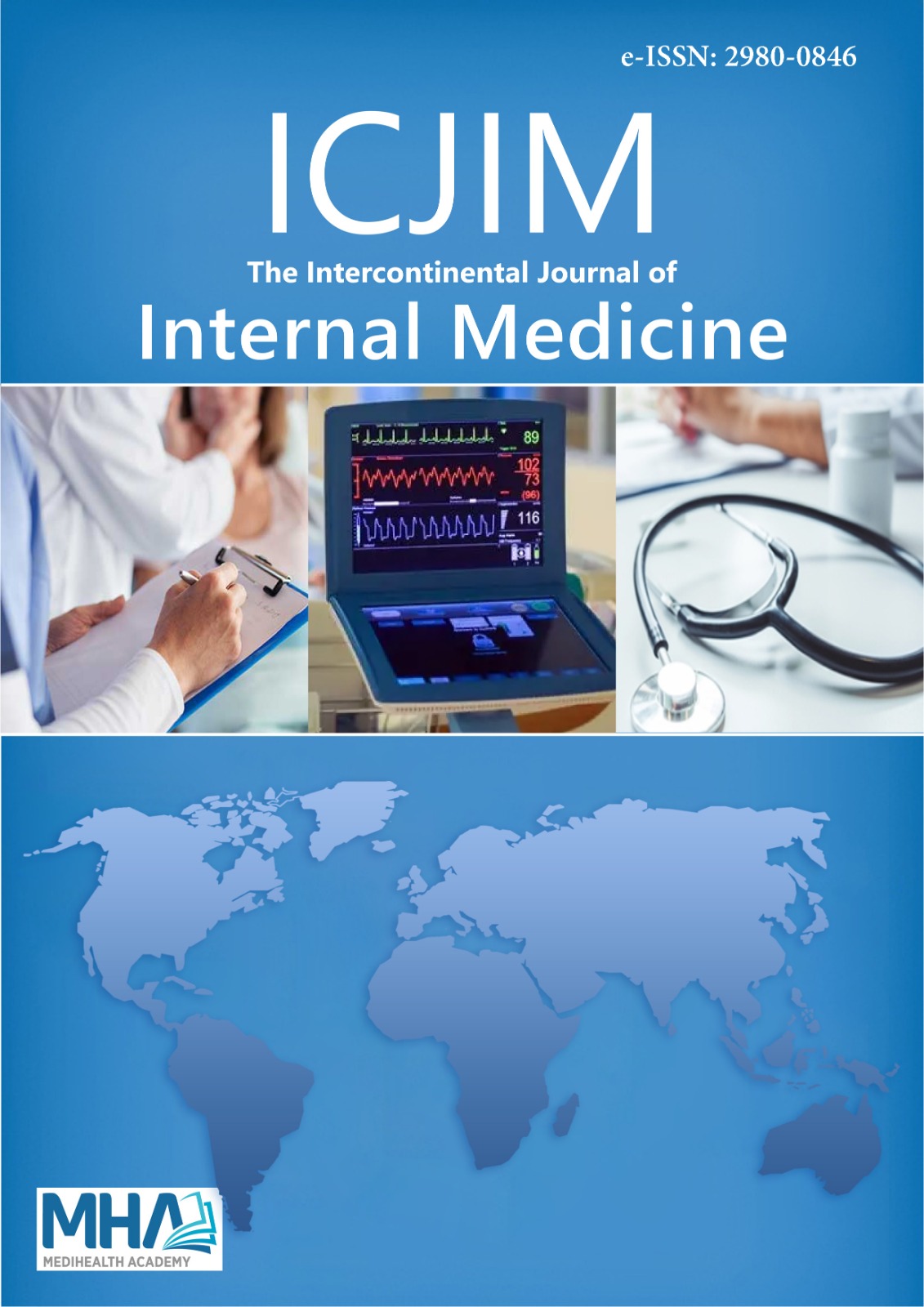1. Maravall FJ, Gómez-Arnáiz N, Gumá A, et al. Reference values of thyroidvolume in a healthy, non-iodine-deficient Spanish population. HormMetab Res. 2004;36(9):645-649.
2. Teng W, Shan Z, Teng X, et al. Effect of iodine intake on thyroid diseasesin China.N Engl J Med.2006;354(26):2783-2793.
3. Knobel M. Etiopathology, clinical features, and treatment of diffuse andmultinodular nontoxic goiters.J Endocrinol Invest.2016;39(4):357-373.
4. Unlu MT, Kostek M, Aygun N, Isgor A, Uludag M. Non-toxicmultinodulargoiter: from etiopathogenesis to treatment. Sisli EtfalHastan Tip Bul. 2022;56(1):21-40.
5. Shimojo N, Kohno Y, Yamaguchi K, et al. Induction of Graves-likedisease in mice by immunization with fibroblasts transfected with thethyrotropin receptor and a class II molecule. Proc Natl Acad Sci USA.1996;93(20):11074-11049.
6. Chiovato L, Bassi P, Santini F, et al. Antibodies producing complement-mediated thyroid cytotoxicity in patients with atrophic or goitrousautoimmune thyroiditis. J Clin Endocrinol Metab. 1993;77(6):1700-1705.
7. Smith BR, Hall R. Thyroid-stimulating immunoglobulins in Graves’disease. Lancet. 1974;2(7878):427-431.
8. Morshed SA, Davies TF. Graves’ disease mechanisms: the roleofstimulating, blocking, and cleavage region TSH receptorantibodies.Horm Metab Res. 2015;47(10):727-734.
9. Davies TF, Latif R. Editorial: TSH Receptor and Autoimmunity. FrontEndocrinol (Lausanne). 2019;10:19.
10. Krohn K, Wohlgemuth S, Gerber H, Paschke R. Hot microscopic areas ofiodine deficient euthyroid goiters contain constitutively activating TSHreceptor mutations. J Pathol. 2000;192(1):37-42.
11. Vassart G. Activating mutations of the TSH receptor. Thyroid. 2004;14(1):86-87.
12. Krohn K,Fu¨hrer D,Bayer Y, et al. Molecular pathogenesis of euthyroidand toxic multinodular goiter.Endocr Rev. 2005;26(4):504-524.
13. Fenzi GF, Bartalena L, Lombardi A. Thyroid autoimmunity and endemicgoiter. Endocrinol Exp. 1986;20(1):49-56.
14. Rootwelt K. Evaluation of a radioreseptor assay for TSH receptorautoantibodies. Scand J Clin Lab Invest. 1988;48(2):157-164.
15. Berghout A, Wiersing WM, Smits NJ. Determinants of thryoid volu¨me asmeasured by ultrasonography in healthy adults in a non-iodine deficientarea. Clin Endocrinology. 1987;26(3):273-280.
16. Vargas-Uricoechea H. Molecular mechanisms in autoimmune thyroiddisease. Cells. 2023;12(6):918.
17. Zonenberg A, Kinalska I, Zarzycki W. Incidence of thryoid autoantibodiesin the endemic goiter. Horm Metab Res. 1994;(26):238-242.
18. Zimmermann MB, Boelaert K. Iodine deficiency and thyroid disorders.Lancet Diabetes Endocrinol. 2015;3(4):286-295.
19. Yildirim Simsir I, Cetinkalp S, Kabalak T. review of factors contributingto nodulargoiterand thyroid carcinoma. Med Princ Pract. 2020;29(1):1-5.
20. Huo Y, Xie J, Chen S, Wang H, Ma C. Recombinant human thyrotropin(rhTSH)-aided radioiodine treatment for non-toxic multinodular goitre.Cochrane Database Syst Rev. 2021;12(12):CD010622.
21. Vargas-Uricoechea H, Nogueira JP, Pinzón-Fernández MV, SchwarzsteinD. The usefulness of thyroid antibodies in the diagnostic approach toautoimmune thyroid disease. Antibodies (Basel). 2023;12(3):48.
22. Morshed SA,Davies TF. Graves’ disease mechanisms: the role ofstimulating, blocking, and cleavage region TSH receptor antibodies.Horm Metab Res.2015;47(10):727-734.
23. Furmaniak J,Sanders J,Sanders P,Miller-Gallacher J,Ryder MM,ReesSmith B. Practical applications of studies on the TSH receptor and TSHreceptor autoantibodies. Endocrine. 2020;68(2):261-264.
24. Diana T,Krause J,Olivo PD,et al. Prevalence and clinical relevanceof thyroid stimulating hormone receptor-blocking antibodies inautoimmune thyroid disease. Clin Exp Immunol.2017;189(3):304-309.
25. Hegedu¨s L, Bonnema SJ, Bennedbaek FN. Management of simplenodular goiter: current status and future perspectives. Endocr Rev. 2003;24(1):102-132.
26. Baloch ZW, LiVolsi VA. Current role and value of fine-needle aspirationin nodular goitre.Best Pract Res Clin Endocrinol Metab.2014;28(4):531-544.
27. Smith PP, McMullan NM, Grubeck-Loebenstein B. Thyroid growth-stimulating immunoglobulins in goitrous disease. Relationship tothyroid-stimulating immunoglobulins. Acta Endocrinol. 1986;111(3):321-330.
28. Nygaard B, Knudsen JH, Hegedu¨s L, Scient AV, Hansen JE. Thyrotropinreceptor antibodies and Graves’ disease, a side-effect of 131I treatment inpatients with nontoxic goiter.J Clin Endocrinol Metab.1997;82(9):2926-2930.
29. Sugenoya A, Kobayashi S, Kasuga Y, et al. Evidence of intrathyroidalaccumulation of TSH receptor antibody in Graves’ disease. ActaEndocrinol (Copenh). 1992;126(5):416-418. doi:10.1530/acta.0.1260416
30. Lee JK, Kong Y, Choi JB, et al. TSH receptor antibody as a predictor ofdifficult robotic thyroidectomy in patients with Graves’ disease. J RobotSurg. 2024;18(1):108. doi:10.1007/s11701-024-01869-y
31. Iwanaga H, Fujita N, Abe S, Naganawa S, Kato K. Correlation betweenthe thyroid computed tomography value and thyroid function inhyperthyroidism: a retrospective study. Ann Nucl Med. 2024;38(8):659-665. doi:10.1007/s12149-024-01938-0

